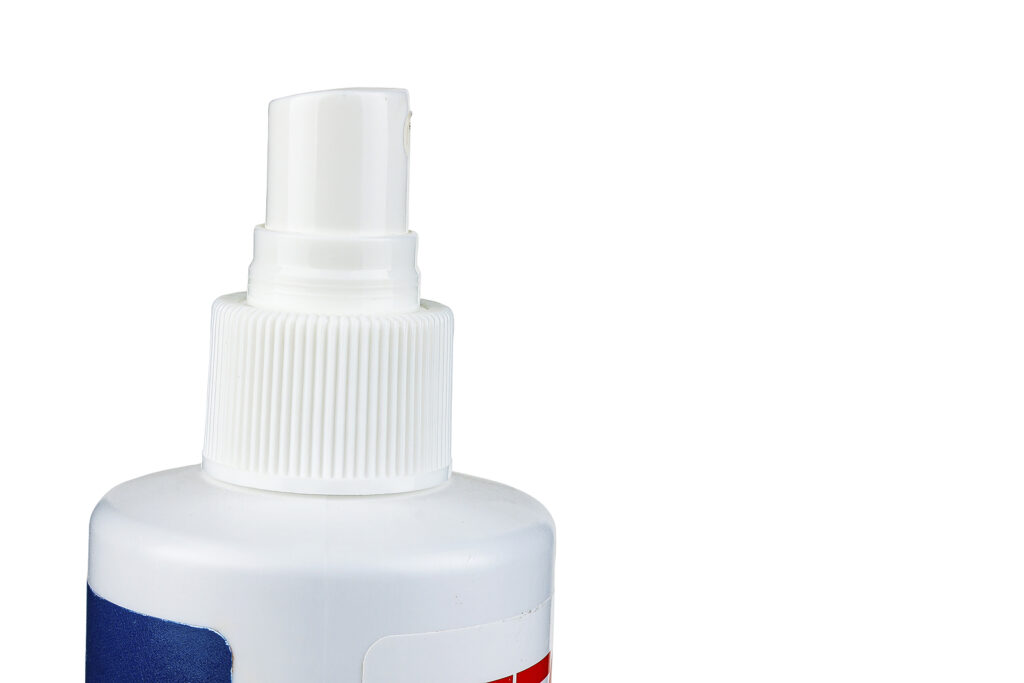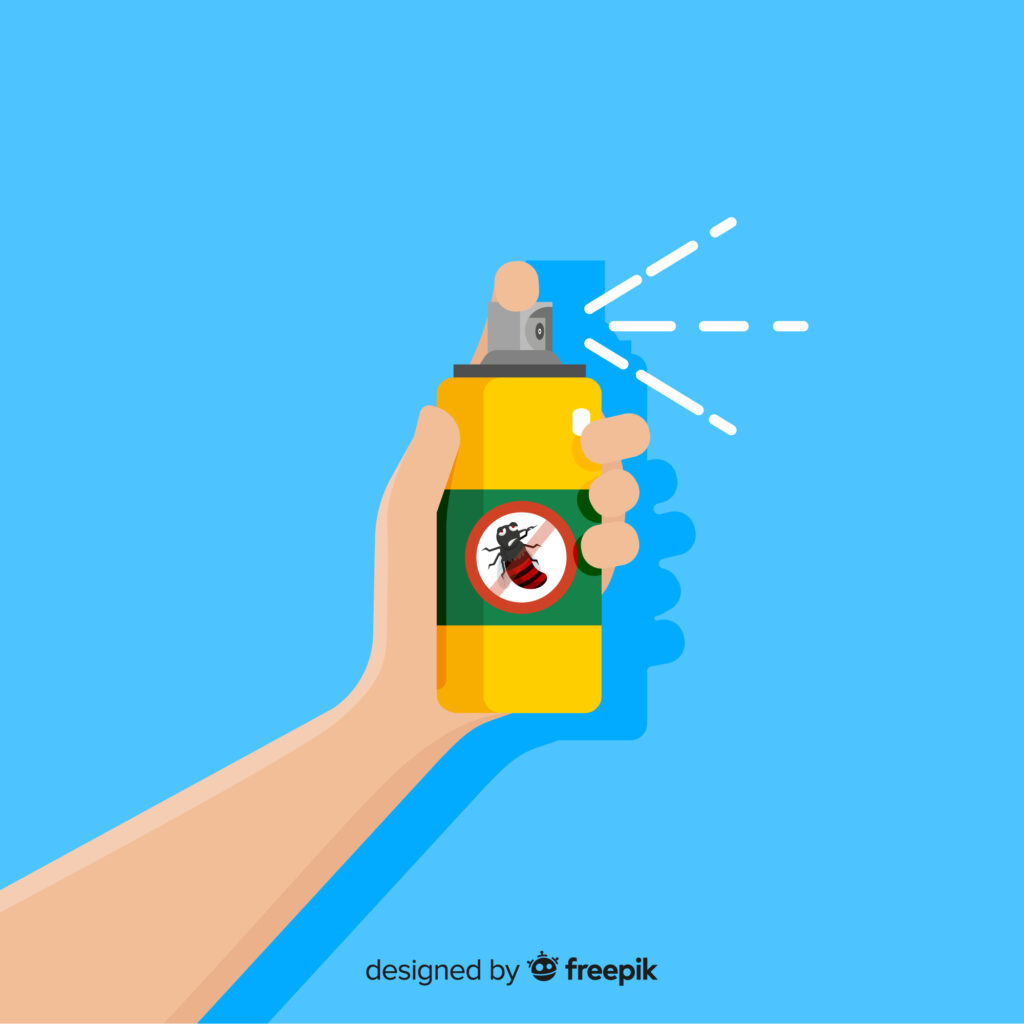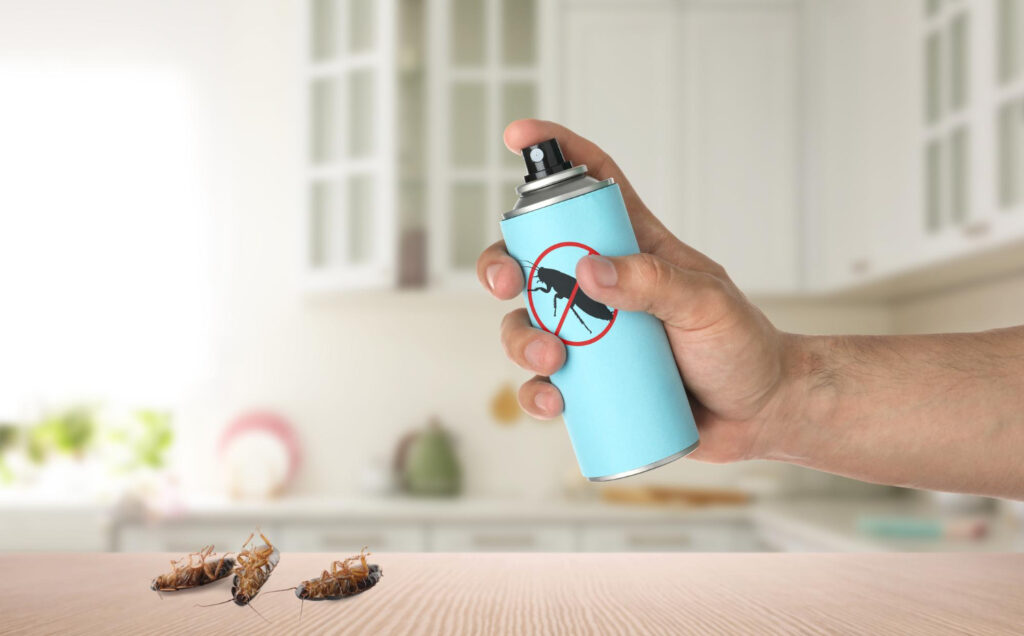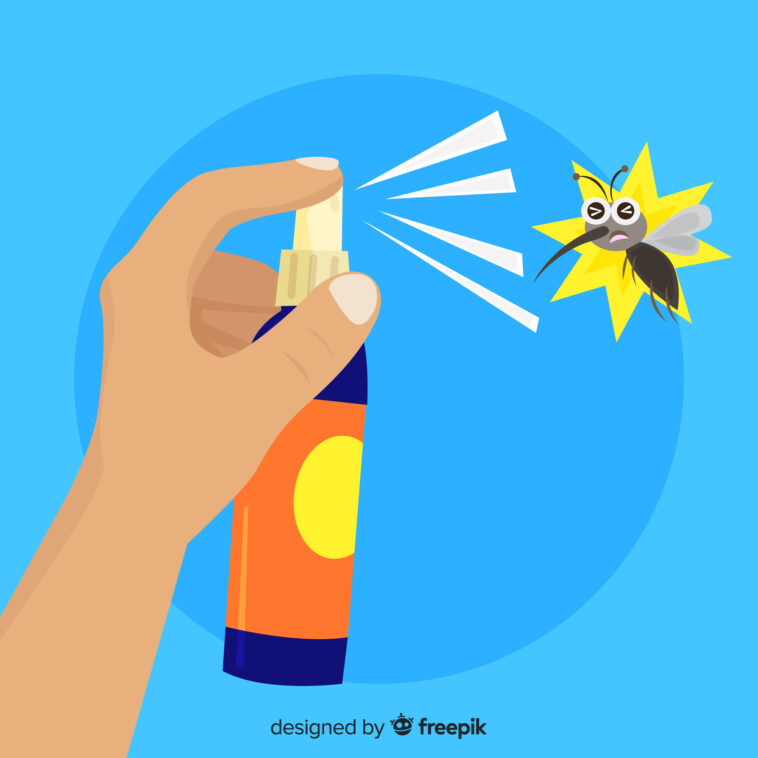DIY Bug Spray for House
Dealing with those pesky insects invading my home has been quite a frustrating experience. I've always been concerned about using commercial bug sprays, as they often contain harmful chemicals that I don't want anywhere near my family and pets. But the good news is, that I've discovered a way to create my own effective bug spray for our house using natural ingredients.
This comprehensive guide will walk you through the process of making a DIY bug spray that's not only safe but also incredibly efficient in keeping those unwelcome intruders at bay. With this natural solution, I can finally say goodbye to those unwanted houseguests!
Understanding the Need for Natural Bug Sprays
To embark on the journey of creating your DIY bug sprays, it's crucial to grasp the significance of choosing a natural solution over conventional alternatives. Many commercially available bug sprays contain potentially harmful chemicals, such as DEET, known to have detrimental effects on both human health and the environment.
Opting for natural ingredients not only shields your loved ones from harm but also contributes to the well-being of the planet by effectively repelling insects in an eco-friendly manner. This approach aligns with a holistic perspective on health and sustainability.

Essential Oils: Nature's Bug Repellents
When it comes to crafting your own bug repellent solutions, essential oils stand out as a crucial ingredient. These highly concentrated extracts, derived from various plants, have a rich history of serving as effective insect deterrents. Let's delve into some of the noteworthy essential oils celebrated for their remarkable insect-repelling qualities:
- Lemon Eucalyptus Oil: Extracted from the lemon eucalyptus tree, this oil boasts potent mosquito-repelling properties. Its natural potency makes it a reliable choice for safeguarding against these bloodthirsty pests.
- Lavender Oil: Lavender's enchanting fragrance is adored by humans but loathed by insects. This versatile oil proves effective against an array of unwanted bugs, including mosquitoes, flies, and moths, making it a must-have addition to your bug-repelling arsenal.
- Peppermint Oil: With its invigorating aroma, peppermint oil creates an unwelcoming environment for crawling insects like ants and spiders. Its strong scent serves as an excellent deterrent, keeping your living spaces bug-free.
- Neem Oil: Nature's own pesticide, neem oil, is a formidable opponent against a wide spectrum of insects. From deterring ants and cockroaches in your home to safeguarding wooden structures from termite infestations, neem oil offers versatile protection against common pests.
DIY Bug Spray Recipes
Now, let's explore some simple yet highly effective DIY bug spray recipes using these essential oils:
Lemon and Eucalyptus Bug Spray
Ingredients:
- 10 drops of lemon eucalyptus essential oil: Lemon eucalyptus oil is known for its potent bug-repelling properties, making it a key ingredient in this DIY bug spray.
- 2 tablespoons of witch hazel: Witch hazel acts as a carrier for the essential oil, helping it disperse evenly when applied.
- 2 tablespoons of water: Water dilutes the mixture, ensuring it's safe for your skin and easy to spray.
Instructions:
- Select the Right Essential Oil: Begin by choosing a high-quality lemon eucalyptus essential oil, as the effectiveness of your bug spray largely depends on the quality of the ingredients.
- Prepare a Spray Bottle: Get a clean, empty spray bottle ready for your bug spray. Make sure it's large enough to hold the ingredients comfortably.
- Measure and Combine Ingredients: Using a funnel, carefully pour 10 drops of lemon eucalyptus essential oil into the spray bottle. This essential oil is a fantastic natural repellent that can help deter a variety of insects.
- Add Witch Hazel: Next, add 2 tablespoons of witch hazel to the spray bottle. Witch hazel not only acts as a carrier for the essential oil but also provides a soothing, astringent effect on the skin.
- Include Water: To ensure the mixture is gentle on your skin, add 2 tablespoons of water. This step also helps dilute the essential oil and witch hazel for a balanced formula.
- Mix Thoroughly: Secure the spray bottle cap tightly and give it a good shake. Mixing the ingredients thoroughly is crucial to evenly distribute the essential oil, witch hazel, and water.
- Application: Before each use, shake the bottle well to ensure all components are properly blended. When ready to apply, spray the solution around entry points in your home, such as doors and windows, as well as outdoor seating areas.
Lavender and Peppermint Bug Spray
Ingredients:
- 10 drops of lavender essential oil: Lavender essential oil is known for its soothing aroma and insect-repelling properties.
- 10 drops of peppermint essential oil: Peppermint essential oil adds a refreshing scent to the spray and serves as an effective deterrent for various bugs.
- 1/4 cup of apple cider vinegar: Apple cider vinegar acts as a natural preservative and enhances the bug-repelling capabilities of the spray.
- 1/4 cup of distilled water: Distilled water is essential for dilution, ensuring the spray is gentle on the skin and easy to apply.
Instructions:
- Select Quality Essential Oils: Begin by choosing high-quality lavender and peppermint essential oils. The purity and potency of these oils contribute to the effectiveness of your bug spray.
- Prepare a Spray Bottle: Find a clean, empty spray bottle that can accommodate the mixture comfortably.
- Measure and Combine Ingredients: Using a funnel, carefully add 10 drops of lavender essential oil and 10 drops of peppermint essential oil into the spray bottle. Lavender oil provides a pleasant aroma, while peppermint oil acts as a natural insect repellent.
- Incorporate Apple Cider Vinegar: Pour 1/4 cup of apple cider vinegar into the spray bottle. Apple cider vinegar not only helps preserve the mixture but also adds to its insect-repelling qualities.
- Add Distilled Water: To ensure that the bug spray is gentle on the skin and easy to use, add 1/4 cup of distilled water. This step also aids in diluting the essential oils and vinegar.
- Thoroughly Mix: Secure the spray bottle cap tightly and shake the mixture thoroughly. Proper mixing is essential to ensure all the ingredients are evenly combined.
- Before Use: Prior to each use, shake the bottle to ensure the ingredients are well-blended.
- Application: Spray the solution in areas where you want to repel insects, such as doorways, patio furniture, and other outdoor spaces.
Neem Oil Bug Spray
Ingredients:
- 2 tablespoons of neem oil: Neem oil, derived from the neem tree's seeds, is a potent insect repellent and has fungicidal properties, making it an excellent choice for a bug spray.
- 1/2 teaspoon of liquid soap: Liquid soap acts as an emulsifier, helping to disperse the neem oil evenly in the water.
- 1 quart of warm water: Warm water aids in mixing the ingredients thoroughly and ensures a well-blended solution.
Instructions:
- Select High-Quality Neem Oil: Begin by choosing a high-quality neem oil, as the effectiveness of your bug spray depends on the purity and potency of the oil.
- Prepare a Spray Bottle: Find a clean, empty spray bottle that can hold the entire mixture comfortably.
- Measure and Combine Ingredients: Using a funnel, pour 2 tablespoons of neem oil into the spray bottle. Neem oil is a versatile natural pesticide and fungicide.
- Add Liquid Soap: Next, add 1/2 teaspoon of liquid soap to the bottle. The liquid soap acts as an emulsifier, ensuring that the neem oil mixes effectively with water.
- Incorporate Warm Water: Fill the spray bottle with 1 quart of warm water. The warm water facilitates the blending of the ingredients, resulting in a consistent solution.
- Thoroughly Mix: Secure the spray bottle cap tightly and shake vigorously. It's crucial to mix the neem oil, soap, and water thoroughly to create an effective bug spray.
- Before Each Use: Before each use, shake the bottle again to ensure all components are well-incorporated.
- Application: Use the Neem Oil Bug Spray on plants, both indoors and outdoors, as well as other bug-prone areas. This natural solution not only repels insects but also helps protect your plants from pests and diseases.
Vinegar and Essential Oil Bug Spray
Experience the dual benefits of vinegar and essential oils with this highly effective Vinegar and Essential Oil Bug Spray. Not only does it act as a natural insect repellent, but it also harnesses the power of essential oils to enhance its bug-fighting properties. Here's a detailed guide on how to create and use this versatile bug spray:
Ingredients:
- 1 cup of white vinegar: White vinegar serves as a base for the bug spray and has natural repellent properties that deter many insects.
- 1 cup of water: Water helps dilute the vinegar, making it safe for use and reducing its pungent smell.
- 20 drops of essential oil (e.g., citronella, tea tree, or cedarwood): Essential oils like citronella, tea tree, and cedarwood are known for their potent bug-repelling qualities. You can choose the essential oil that suits your preferences or combines them for added effectiveness.
Instructions:
- Choose High-Quality Essential Oils: Start by selecting high-quality essential oils for your bug spray, as their purity and strength will determine the spray's effectiveness.
- Prepare a Spray Bottle: Find a clean, empty spray bottle that can hold the entire mixture comfortably.
- Measure and Combine Ingredients: Using a funnel, pour 1 cup of white vinegar into the spray bottle. Vinegar acts as a natural bug repellent and helps dissolve essential oils.
- Add Water: Add 1 cup of water to the spray bottle to dilute the vinegar. This step not only makes the solution milder on the skin but also reduces the vinegar's strong odor.
- Incorporate Essential Oil: Add 20 drops of your chosen essential oil(s) to the mixture. Essential oils like citronella, tea tree, or cedarwood are excellent choices for deterring bugs.
- Thoroughly Mix: Secure the spray bottle cap tightly and shake the mixture thoroughly. Proper mixing ensures that the vinegar, water, and essential oil are evenly distributed.
- Before Each Use: Prior to each use, shake the bottle to ensure all components are well-blended.
- Application: Spray the solution around windows, doors, and other potential entry points for bugs. You can also apply it to outdoor seating areas or any place where you want to keep insects at bay.

How to Apply Your DIY Bug Spray
Maximize the effectiveness of your homemade bug spray with these essential application guidelines. These tips will help ensure that your DIY bug spray effectively repels insects and keeps your outdoor spaces comfortable:
Target Entry Points
Apply your DIY bug spray strategically around entry points in your home, including doors, windows, and vents. This creates a protective barrier that deters insects from entering your living spaces.
Create Bug-Free Zones
Extend your bug-free sanctuary by spraying the solution on outdoor seating areas, patios, decks, and other outdoor spaces where you spend time. This proactive approach helps keep annoying bugs at bay, allowing you to enjoy the outdoors without disruptions.
Regular Reapplication
To maintain the bug spray's effectiveness, reapply it every few days or after rain. Rain can wash away the spray, reducing its potency, so be vigilant about reapplication, especially during wet weather or in high bug-activity seasons.
Storage Matters
Properly store your DIY bug spray in a cool, dark place. Essential oils, which are a key component of many organic bug spray recipe, can degrade when exposed to heat and sunlight. Storing the spray in a cool, dark location helps preserve the integrity and effectiveness of the essential oils.

Additional Tips for Pest Control
Enhance your pest control efforts with these supplementary tips that harness the power of natural solutions to keep your home and garden pest-free:
Maintain a Clean Environment
One of the most fundamental steps in pest control is maintaining a clean home. Regularly clean and remove food scraps from your kitchen and dining areas. Crumbs and food residue can attract insects, so keeping your living spaces tidy is an essential preventive measure.
Seal Entry Points
Conduct a thorough inspection of your home, paying attention to walls, windows, and doors. Repair any cracks, gaps, or holes promptly to prevent bugs from finding their way inside. Proper sealing acts as a first line of defense against unwanted intruders.
Natural Garden Allies
Transform your garden into a natural pest-repelling oasis by planting herbs like basil, rosemary, and mint. These aromatic plants not only add flavor to your culinary endeavors but also act as natural repellents, discouraging insects from settling in your garden.
Natural Barriers
Consider using natural barriers like diatomaceous earth or cedarwood chips. Diatomaceous earth is a fine powder that damages the exoskeletons of insects, effectively dehydrating and killing them. Cedarwood chips emit aromatic compounds that repel many pests. Place these barriers strategically around your home or garden to create a pest-resistant zone.
FAQs
What is the best homemade bug spray for the home?
The best homemade bug spray for your home can be made by mixing equal parts of water and white vinegar in a spray bottle. Add a few drops of essential oils such as citronella, eucalyptus, or lavender to the mixture. Shake well before use, and spray it in areas where bugs are a problem, like doorways and windows. This natural bug spray is effective in repelling common household pests and is safe for indoor use.
How do you make natural bug spray for your house?
To make a natural bug spray for your house, combine 2 cups of water with 10-20 drops of essential oils known for their bug-repelling properties, such as citronella, lemon eucalyptus, or peppermint oil, in a spray bottle. Shake well to mix the ingredients thoroughly, and then spray it around windows, doors, and other entry points, as well as in areas where pests tend to gather. This homemade natural bug spray is an eco-friendly and safe alternative to chemical insecticides for keeping your home bug-free.
Are there any other essential oils I can use in homemade bug sprays?
Yes, there are several other essential oils you can use to make homemade bug sprays. Some effective options include cedarwood, lemongrass, rosemary, and tea tree oil. Experiment with different oils or mix them to find a scent that works best for you and effectively repels bugs.
How often should I apply homemade bug spray indoors?
The frequency of application depends on the severity of the bug problem and the effectiveness of your spray. In general, it's a good practice to reapply the spray every few days or when you notice a decrease in its effectiveness. Pay special attention to reapplying after cleaning or wiping down surfaces where you've sprayed the solution.
Conclusion
In my pursuit of a pest-free home, creating DIY bug sprays using natural ingredients has not only proven effective but also deeply rewarding. Opting for these homemade solutions over chemical-laden commercial alternatives aligns with my commitment to safeguarding my family's well-being and nurturing a sustainable lifestyle.
These DIY bug sprays, infused with essential oils like lemon eucalyptus and lavender, have not only become powerful deterrents but have also filled my living spaces with delightful fragrances, making my home a more pleasant sanctuary.
Among these recipes, the Vinegar and Essential Oil Bug Spray stands out as a versatile favorite, showcasing the effectiveness of vinegar and essential oils in maintaining a bug-free environment. Applying these sprays strategically, creating bug-free zones, and maintaining regular reapplications have become essential routines that allow me to fully enjoy my home and outdoor spaces without the presence of unwanted pests.
Embracing these natural pest control methods, along with cleanliness, sealing entry points, and leveraging natural allies and barriers in my garden, has not only eliminated pests but also enriched my life with a healthier, eco-conscious perspective on home and garden care.




